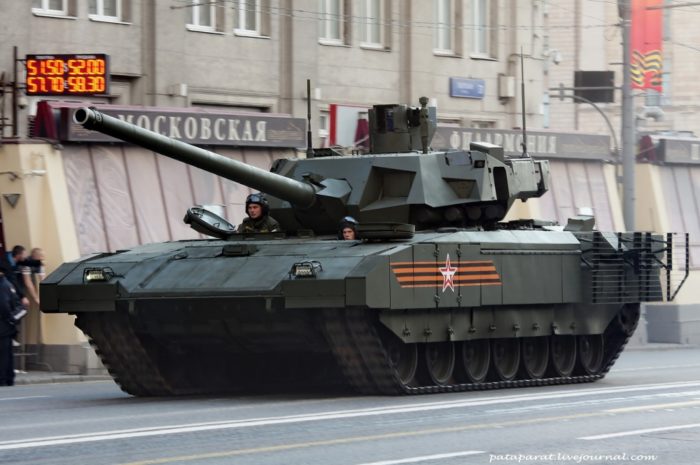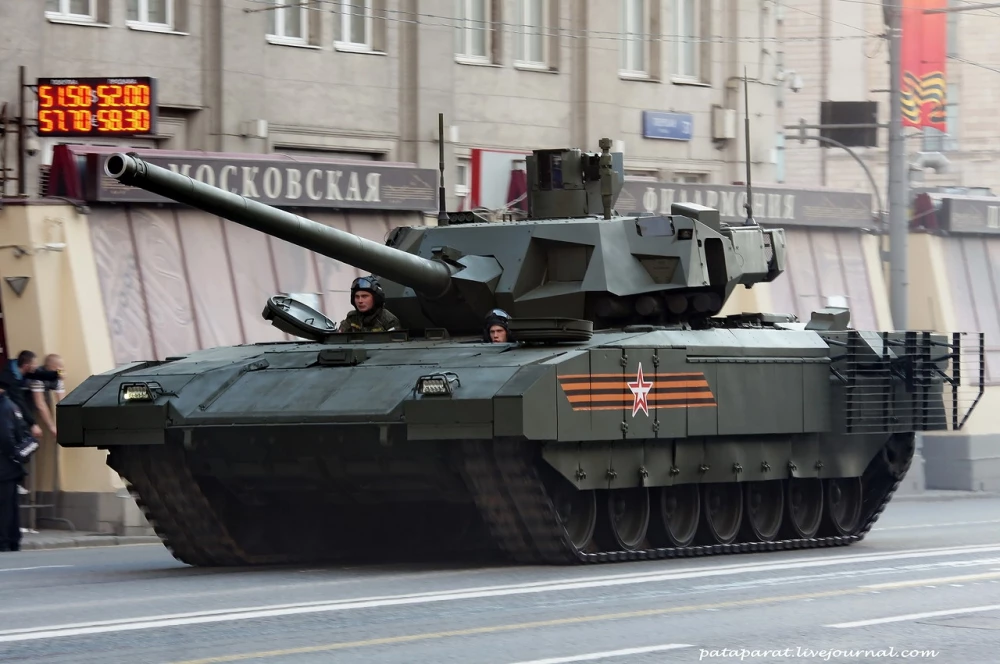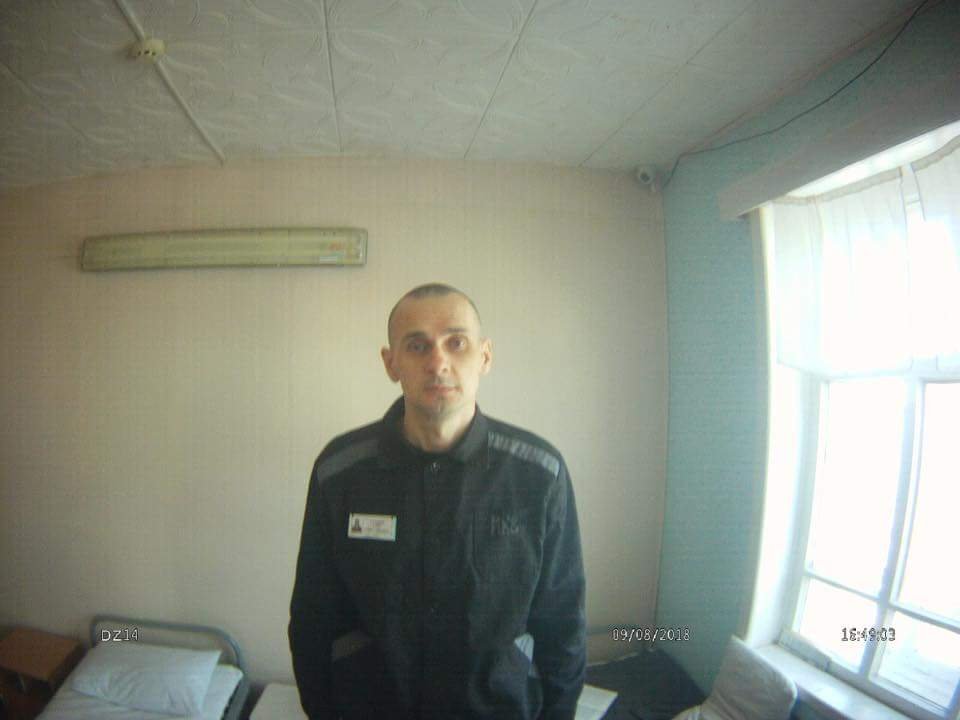A team of analysts from the Ukrainian Trap Aggressor NGO in partnership with the International Renaissance Foundation investigated why the restrictions introduced earlier did not work and what needs to be changed in the sanctions policy today for Russia to lose its tank production.
Uralvagonzavod: from "iPhone tram" to Armata tank
On day one of Russia's full-scale invasion of Ukraine in 2022, the UK immediately imposed sanctions on Russian companies and individuals. In particular, sanctions were introduced against the state-owned Uralvagonzavod corporation that British businesses were prohibited to deal with. In March, Uralvagonzavod was put on the new sanction lists of the European Union. Due to this, this tank manufacturer lost access to goods and technologies which could reinforce the security and defense sector of the Russian Federation. The sanctions to which Uralvagonzavod was subject were upheld even by New Zealand and Japan.
The Uralvagonzavod corporation is one of the biggest tank manufacturers, employing around 30,000 people. It is known, first and foremost, for its tanks and train cars.
Actually, this is the only tank manufacturer in Russia. Uralvagonzavod modernizes existing tanks of the Russian Army, produces new models of tanks such as Armata and Proryv as well as assembles thermobaric MLRS heavy flamethrower Solntsepyok systems.
The Uralvagonzavod corporation has gained the fame of “Putin’s favorite factory” in the Russian segment of the Internet. Amid mass protests in central Moscow after the falsification of the election to the State Duma in 2011, Putin held his traditional live "direct line" with Russians, and one of the Uralvagonzavod workers, presumably emotionally from the bottom of his heart, suggested that he should come out with other men to "defend their stability” from the protesters.
In 2014, following the annexation of Ukraine's Crimea and the Russian aggression in the Donbas, the United States imposed the first sanctions on Uralvagonzavod. At that time, American citizens and businesses were banned from dealing with Uralvagonzavod. Then the European Union also introduced its first sanctions against this Russian corporation. In this way, Uralvagonzavod lost access to loans in European banks.
In 2018, after the scandals in connection with the Russian interference in the US elections, Uralvagonzavod found itself on a new sanctions list. Washington restricted access of this Russian tank corporation to American technologies and finances. Its top managers were denied American visas.
It was the train car business that suffered the most. Uralvagonzavod had to shut down a joint locomotive-building project with the American Caterpillar company. All preliminary agreements with the Canadian Bombardier company to design metro train cars ended in the same way.
Sambre et Meuse, a French producer of train car spare parts that Uralvagonzavod bought in 2010, has turned into another white elephant for the Russian corporation. Also, the project to assemble Russian train cars in the Lithuanian city of Jelgava was also suspended.
The cooperation of Uralvagonzavod with Pesa, a Polish producer of municipal train cars, in its turn, has ended in a tough court dispute. In 2016, the joint Russian-Polish project saw the rescission of the contract with Moscow on supplying a large batch of trams. Pesa managed to have EUR 1.3 million of the contractual surety recovered, with the court hearings the EUR 55 mn Uralvagonzavod had to pay off to its Polish counterpart for already-produced train cars dragging on for years.
Russian propaganda finds it more difficult to cope with the failure to produce widely advertised innovative products of Uralvagonzavod. The most serious image-damaging blow was dealt with the closure of Russia One city tram project, which in the pre-sanctions period was called an “IPhone” due to its futuristic design. Numerous defects prevented the new city tram from going into mass production. Recently, it was seen only with the Soviet-era Uralvagonzavod factory shops in the background.

The Armata tank is another problem product, which avoided failure due to generous budget injections from the Russian Ministry of Defense. This tank was demonstrated for the first time during a military parade in Moscow in 2015. That presentation became a meme because the newest tank stalled during a rehearsal. Since that time, Russian propaganda promised every year that a contract on the production of hundreds of such tanks was about to be signed. In fact, the last field tests of Armata are to be completed in 2022. According to the media, only three dozen Armatas have been produced.

Despite sanctions, Uralvagonzavod's post-2014 tanks are used against Ukraine
However, regardless of all difficulties experienced by Uralvagonzavod, tanks assembled there after 2014 have reached Ukraine. It means that the imposed sanctions have seriously hit the prospects of this Russian corporation, but have not completely undermined its potential to produce the favorite product of the Putin regime.
During all years when Russia was subject to sanctions, the Russian Ministry of Defense continues contracting “Putin’s favorite factory” despite all claims related to prices and defects of the armored vehicles production line of Uralvagonzavod.
As it often happens in Russia, budget expenditures can be patriotically absurd. For example, in 2019 the Ministry of Defense ordered 400 ancient T-34 tanks used during World War Two with the aim of demonstrating them during parades and solemn occasions. The total value of the contract is RUB 10 bn or $100-200 mn.
Also, the factory has been receiving significant replenishment from traditional foreign clients. Since 2014, open sources have been publishing information about new export contracts with Algeria, Azerbaijan, Belarus, Vietnam, India, Iraq, and other countries.
In 2015, Algeria ordered the assembling of 200 Russian Т-90 tanks in its territory for the total amount of one billion dollars. Around 60-70 tanks had to be supplied to Vietnam in 2016-2017.
Five years ago, some details of the contract concluded with Iraq on supplying tanks for the total amount of one billion dollars were unveiled.
In 2019, Moscow and Deli reached an agreement on the latter buying around half a thousand Т-90МС tanks for the total amount of $1.93 bn.
As far as the railway business is concerned, it is also being saved, in manual mode. The Russian Railway structures have often bought overpriced Uralvagonzavod train cars at their own cost. The local budgets of different cities and towns regularly include expenditures to repair and renovate their tram fleets.
In order to avoid sanctions, large Russian oligarchy businesses often pretend that there is a liberal economy in Russia and that private capital exists separately from the government. However, this is not exactly the case. In 2015, Alfa-Bank was trying to have arrears in the amount of RUB 3.4 bn recovered from Uralvagonzavod in court and even had accounts of this Russian corporation arrested, but eventually waived its claims.
“Being aware of the strategic importance of the company for the Russian economy and defense capabilities of the country, we decided not to pursue arrest of its accounts,” the local Alfa-Bank patriotically explained its logic.
Uralvagonzavod's fate after Russia's invasion of Ukraine
On the eve of May 9, the White House website published a press release about the results of the G7 meeting on sanctions against Russia with a paragraph about Uralvagonzavod in it. American public officials stated that Uralvagonzavod and its subsidiary Chelyabinsk Tractor Plant “have suspended their work due to the lack of foreign components” under the pressure of sanctions. Undoubtedly, this is a good sign for Kyiv.
However, it's important to remember that the Kremlin has many tools in its box to relaunch tank production. This is, first and foremost, money. A good testimony to this is a story
about the Austrian metal turning and cutting center that managed to sell equipment worth EUR 8.5 mn to Uralvagonzavod in 2018 through a chain of Russian firms under a secret contract. The name of the Austrian producer is not mentioned because all contracts are classified.
Nevertheless, this case testifies that schemes enabling to provide the tank manufacturer with modern foreign equipment were alive and well.
This means that from now on Ukraine, along with its partners, has to take more efforts to deprive the Russian Defense and Industrial Complex of modern equipment.
The strategic partners of the Russian Defense and Industrial Companies must be next to go under sanctions. For example, in the case of Uralvagonzavod, it is the Russian Railway. Well-aimed strikes on the finances of the Russian railway company will undermine its capability to pay for new train cars supplied by Uralvagonzavod.
It is worth remembering that few Russian partners in the world market of weaponry and arms are guided by ideological rather than financial gains. Russian tanks are simply cheaper than American and European analogies. However, thousands of images and videos of armored vehicles burning in Ukrainian fields have already cast doubts on the reasonableness of their procurement.
So, the Ukrainian Defense and Industrial Complex, in cooperation with its Western partners, should offer alternative military equipment to the world to push the Kremlin out of its traditional markets.
Such complex sanctions and additional economic measures are capable of taking Russia back to the time of the USSR -- when the Soviet Union had no option but to exchange weaponry and equipment for Indian tea, coffee, tobacco, seeds, and other scarce goods for the aggressive empire.
Read also:
- How Germany’s industrial giants help Russia manufacture weapons of war
- How Western sanctions cripple Russia’s war machine: no modern tanks, navigation systems or drones
- How Ukraine is preparing a Tribunal for Putin
- 31 ways Russia evaded sanctions, boosting its war machine
- How foreign microchips end up in Russian tanks despite sanctions
- Russia’s milk sector was crippled by sanctions. Then British packaging company Mondi came to the rescue
- How to make sanctions really painful for Russia, immediately
- How Germany’s industrial giants help Russia manufacture weapons of war




